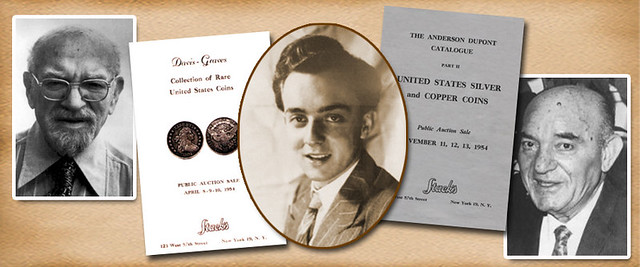
PREV ARTICLE
NEXT ARTICLE
FULL ISSUE
PREV FULL ISSUE
HARVEY STACK'S NUMISMATIC FAMILY, PART 56The latest article in Harvey Stack's blog series is about the great changes in gold and silver pricing in the early 1970s, and the effect on the coin market. -Editor  The year 1971 continued the inflation of 1970, with the value of precious metals advancing each month. The public believed that silver would continue to rise, and the search for earlier silver coins in change grew more intense. Melting of silver coins was allowed and the value of each ounce of silver advanced. Speculators and investors crowded the market and the demand was stimulated further as more people learned of the increasing value of each U.S. silver coin struck before 1965. For gold it became necessary to first advance the value of an ounce of gold from the original value of $35. As it got to $42 at the end of 1970, President Nixon "closed the gold window," so that the Treasury could officially raise the value to $42 per ounce. With the window closed, gold was no longer sold by the United States. Gold certificates, earlier redeemable for an ounce of gold at the U.S. Assay office, were no longer exchangeable. All these inflation-motivated actions caused a temporary halt on the dollar and its redemption. Only in special cases were foreign government obligations met with gold for notes, bonds or certificates. These actions, that made gold and silver more valuable in comparison with the dollar, slowed for a short time the drain on the United States' supply of gold. Counterfeiters, especially those dealing with coins from outside of the United States, found it easier to make coins of a given weight with a lower gold content. These false coins continued to be a problem on the market. We never returned to having imports of gold coins limited, but at the Custom House they were examined more carefully, and the flow of counterfeits was somewhat restricted. Educated dealers, collectors, pawn brokers and precious metal dealers formed alliances to try to deter the false coins from the market place, including through the Professional Numismatists Guild. But the precious metals market was too large for the relatively few dealers who were knowledgeable to control the problem. The Congress of the United States had meetings to investigate how to stop these counterfeits from continuously flooding the market, weakening the value of genuine pieces and causing losses and disillusionment among collectors. It took Congress, until 1973 to call a major meeting of hobbyists to testify and suggest remedies to the abuses that were plaguing all hobbies, not just numismatics. I will say more about that meeting when I get to the happenings of 1973. To read the complete article, see:
To read the earlier E-Sylum article, see:
Wayne Homren, Editor The Numismatic Bibliomania Society is a non-profit organization promoting numismatic literature. See our web site at coinbooks.org. To submit items for publication in The E-Sylum, write to the Editor at this address: whomren@gmail.com To subscribe go to: https://my.binhost.com/lists/listinfo/esylum All Rights Reserved. NBS Home Page Contact the NBS webmaster 
|